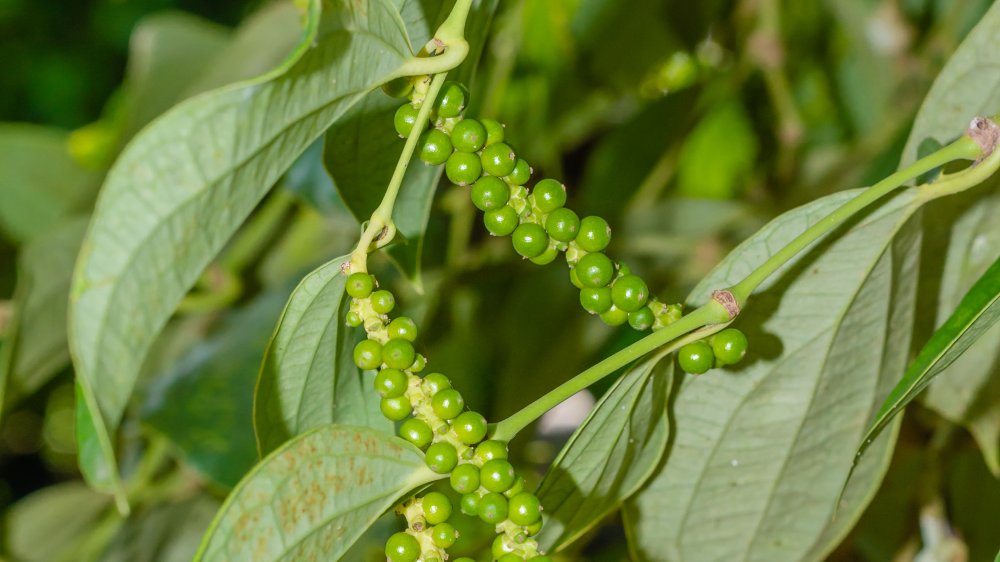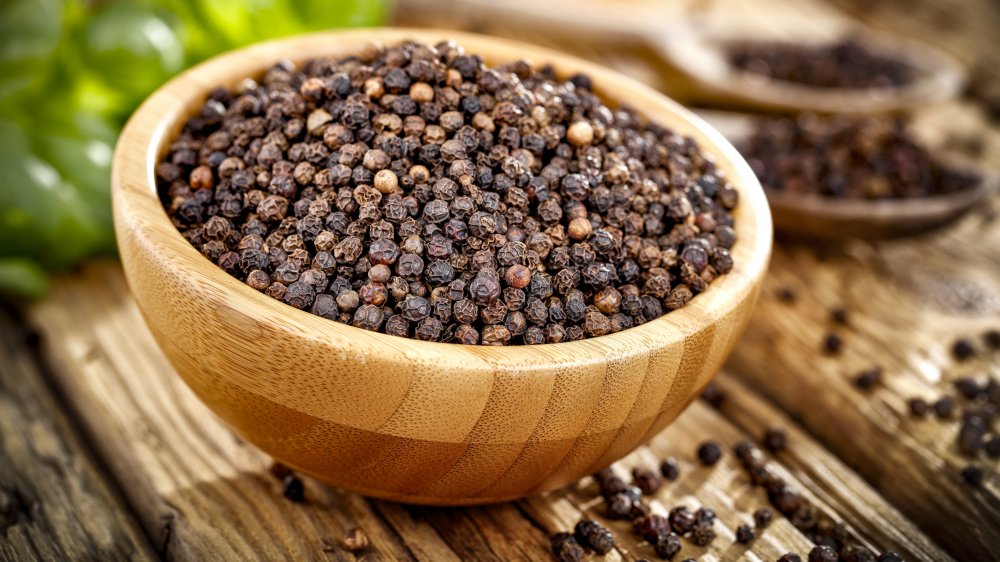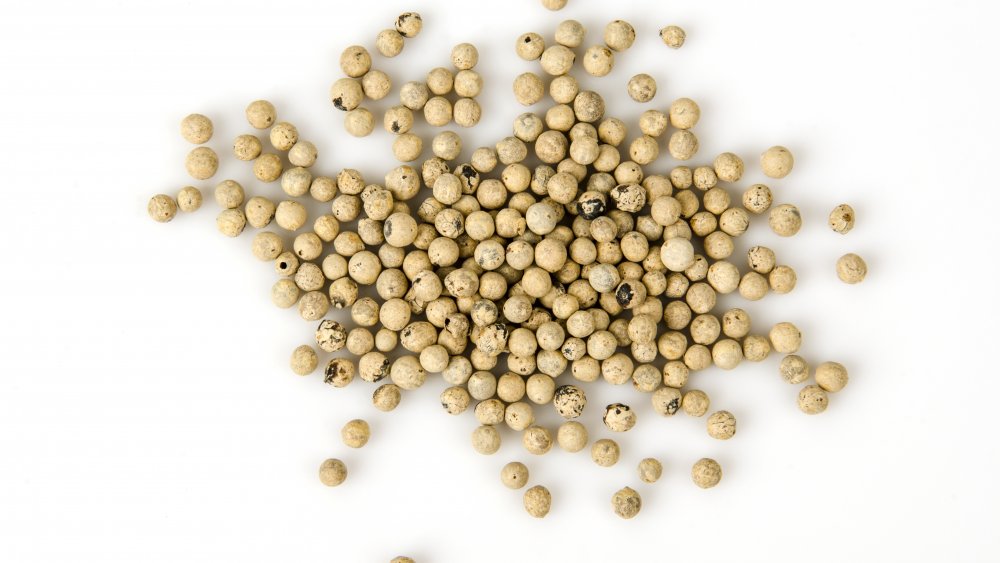White Pepper Vs. Black Pepper: Is There Really Any Difference?
To the uninitiated, the piper nigrum, or pepper plant may not look like much, but we wouldn't be exaggerating if we called it the vine that launched a thousand ships. Its berry, which we know as pepper, has always been prized throughout history, and the spice is so valuable the Romans tried to use that — along with gold, silver, silks, and animal hides — to try and get the Visigoths to leave their city alone in 410 AD; unfortunately, negotiations broke down and the ransom didn't prove to be a deterrent (via Today I Found Out).
All the berries that grow on the pepper plant grow to the exact same shade: red. What sets the peppercorns apart is when we pick the berries they are derived from, and what we do with the berries once they are picked (via Bon Appetit).
Where black pepper comes from
The Spruce Eats says black peppercorns come from berries that have grown to their full size, but they are still green and are not yet fully ripened. These berries are picked and allowed to dry in the heat, where the fruit shrivels, and enzymes kick in to turn the skin black or dark brown.
We use black peppercorns either whole or ground. Spiceography describes the flavor of black pepper as sharp, piney, and woody, and stresses that black pepper is not to be meant to be used as something we add to a dish as a flavor enhancer, but as a spice. It is favored in Western cooking, and on just about everything from meats to veggies (via Epicurious).
Where white pepper comes from
White pepper is what happens when the pepper berry is picked when it is bright red and fully ripened. Once the berries are harvested, they are soaked, and their outer skins are rubbed away to reveal a white inner layer. The berries are then laid under the sun, whose heat not only dries out the fruit, but it also bleaches it. Like the black peppercorn, white peppercorn can either be ground up or cooked whole. White pepper is preferred in Asian cooking, or in dishes where pepper is needed and a creamy appearance is desirable.
While white pepper is not as fragrant as black pepper, it packs a lot more heat, so less pepper will be needed if you are substituting white for black.


